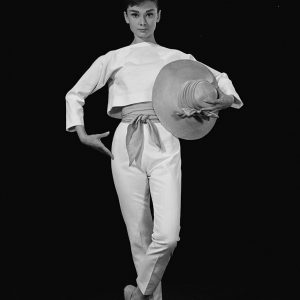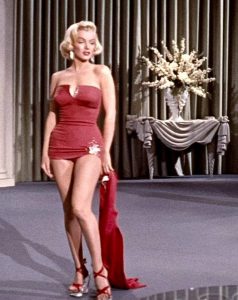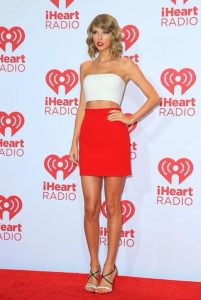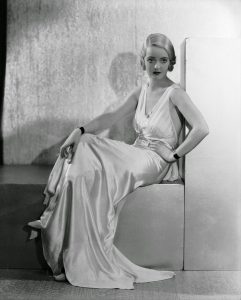This post uses affiliate links.
Not only are systems based on different criteria, but they also provide you with different things. Sometimes, people take issue with systems because they are looking for something a particular system doesn’t provide.
I’m only going to be talking about the Big Three here: Kibbe, Dressing Your Truth, and Zyla. There are other systems out there, but these are the ones I focus on in this blog. (I am also interested in Fantastical Beauty, but it’s newer and I’m not quite sure how it fits.)
So I’m going to go over what I see these systems providing their users/clients/customers, and the pros and cons. These are based on my own experiences and observations, having been an active participant in online communities focusing on these groups and knowing people who have received services from all three providers.
1. David Kibbe’s Metamorphosis
If you read the book, David talks about creating the “total look,” i.e., the image that a studio would come up with for a star, back in the day (which is why contemporary celebrities aren’t that great for inspiration in this system–they don’t really do this in the same way anymore):
Legions of artists were employed to create the special and specific image of the star that would identify each star to the public…By viewing an image that was based one each star’s special and unique essence, the audience was able to easily identify and understand the star in a complete and unconscious way…This is as important for you as it is for any Hollywood movie star! A large part of your success in life…is predicated on how effectively you are able to communicate your unique identity to others…Discovering your Image Identity is the first step, for it allows to utilize everything you are–both physically and innately–so that you can integrate your essential uniqueness into your own total look.
David Kibbe, Metamorphosis, pp. 6-7
So as you can see, his intentions are very high concept. It is not simply, “look a little better and have an easier time getting dressed.” It is meant to enable you to become the star of the motion picture that is Your Life. If you see something on the internet along the lines of, “Capsule Summer Wardrobe for the Soft Dramatic Body Type!,” this person has missed the point completely. I am pretty sure David Kibbe is allergic to capsule wardrobes. You need to have separate, fabulous outfits for all of your fabulous occasions. It is not “How to Dress for Your Body.” I think this misconception exists because the parts of the book that made it online were sections like the quiz and the recommendations that are in the book. The more theoretical side of David’s work did not make it.
David’s work is meant to bring your life to a higher level by enabling you to move through the world as a STAR. He is not thinking about how you can look a little more pulled together when you’re making your Target run (although you can be, as a result of following his work). He is thinking about your receiving an award on stage, in recognition of your fabulousness. If you’re not looking for anything except maybe which skirt shape is most flattering on you, it’s probably not the system for you.
It is perhaps the most intensive in terms of “workload.” You not only have to break through seeing yourself for who you are, but but you basically have to relearn how to think about clothing. Especially with the changes in fashion in recent decades, it is a very different way to approach dressing. I have seen absolutely amazing results from friends who have stuck with it, though, even without going to see him in person.
Cost: Going to see him in NYC is very expensive. David, however, is an active participant in Facebook groups and has come up with a series of exercises to help you land on your Image ID, and he will give advice to people as well–all for free.
It’s the system for you if: You’ve ever watched an old movie on TCM and wanted Edith Head to design you an outfit for each scene of your life.
2. David Zyla
David Zyla is fairly similar. He gives you your unique version of an Archetype, and your unique color palette. Both Davids come from working with actors, so to me, the idea of what your starring role would be figures prominently in both.
Zyla gives much more concrete advice. (It is not that Kibbe doesn’t; but it’s more like an idea with limitless possibilities, whereas the advice Zyla gives is very specific.) Your colors are going to exact matches when you buy items with them out in the wild and his recommendations are very specific. He has additional services, such as an extended color palette and the Ultimate Styling Session, where he sketches outfits for you based on a specific need or event (some people do this with him multiple times). He will go shopping with you and consult with you on interior decoration, and more.
There are some people who go and work with Zyla many, many times. Some people can only ever afford the initial consultation. I know people who love what they got and I know people who don’t. The biggest problem I see is that he gets so specific that people aren’t sure what to do when they see something they like, but it isn’t something that they have gotten a definite “yes” or “no” from Zyla about. Some people seem to love what they have for quite some time, and then feel the need to go outside of it.
If you want very clear recommendations and a tight color palette, I think Zyla would be a great stylist to go to. It seems to be the most difficult to DIY to me, even with a book. It is just so much about his vision for you.
Cost: The initial consult is under a thousand, and the subsequent services vary. He travels, both in the U.S. and in Europe. He has a book (still in print, so much cheaper than Kibbe’s!), and while the book has a DIY process and I have seen people get close, it can’t give you the custom look seeing him in person does.
It’s the system for you if: you want a vision of yourself from an Emmy-winning stylist, and could potentially pay for several sessions to really develop your style with him.
Dressing Your Truth
Dressing Your Truth is the one I would recommend most to people who just want to look more pulled together, and can’t either dedicate a ton of time or drop a large sum of cash at once. If you want to introduce your friends and family to something, this would be it. Carol’s system is definitely meant for busy people with practical needs. You can send someone the new Beginner’s Guide and they would be well on their way.
Dressing Your Truth also has a ton of content to help you in their Lifestyle program. They release new content pieces almost every weekday, and I find them fun to watch. If you want to put together a capsule wardrobe with items you can mix and match, this is definitely the system I would choose. It is easily the most accessible of the three. Once you’re a Lifestyle member, there are a ton of informative content pieces on helping you develop your style, and there are two shopping guides posted per type per week in their StyleInspire feature.
In addition, the style work is just part of it, and there is a lot of personal development content that is also valuable, in my opinion.
Cost: The Beginner’s Course is free, Lifestyle is $12.95/month or $7.95 if you pay a whole year, and the style kit is $99 when it’s not sale, but it frequently is.
It’s the system for you if: You want to look better and more pulled together and have a capsule wardrobe, clear guidelines, accessible information, etc. You are interested in personal development systems like MBTI or Enneagram.
What I Use
I don’t use Zyla, because I haven’t seen him. I use a combination of Kibbe and DYT. Flamboyant Gamine always figures prominently in my mind, because it just is what I am. I don’t use a list of recommendations (he doesn’t anymore either!), but I have a general idea of how to work with my yin/yang balance, both how Kibbe means it and how Carol means it (they both use this terminology, but in different ways). I use my DYT T4 color palette exclusively now, but otherwise I find that they can inform one another and my outfits are all both FG and 4/3.
Which system(s) do you use? Do you find that what I have written above to be true, in your experience?
Stylesyntax.com is a participant in the Amazon Services LLC Associates Program, an affiliate advertising program designed to provide a means for sites to earn advertising fees by advertising and linking to Amazon.com.





